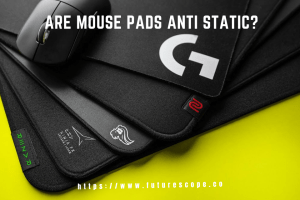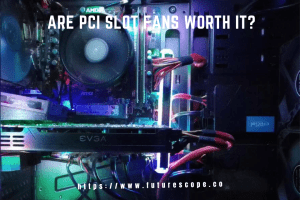What We Have Covered in This Article
Last Updated on October 17, 2020 by Editor Futurescope
A USB headset is a combination of headphones and microphones, popularly used in telemarketing, video games, and other activities that require such gadgets. Well, you may encounter a problem of your USB headsets suddenly going silent, or your PC no longer recognizes them. USB headset did not detect windows ten is common but fixable. Let’s go through the below methods of fixing this problem.
Method 1: Check the USB Headset
After checking that your Headset is broken or not, check if its source is the headset configuration on your PC. Plug the Headset on all USB ports or even use another PC to be sure that it’s the headset hardware. Try unplugging the headsets and resetting the PC. Once you are sure that the source of the problem is likely to be your PC, try the methods of fixing the problem on Windows 10.
Method 2: Booting Up Windows 10 with Headsets Plugged
USB headsets mostly preferred over aux because of their excellent sound, which is digital to digital with no sound alteration to them. The USB Headset can fail to fetch the music if there is a clash of peripheral devices. The encounter of devices and applications mostly happens when PC is turned on and boot while devices plugged in. Likewise, do not plug the Headset while Windows 10 is booting. If the problem occurred while the computer was on unplug the Headset and restart the PC, after the OS is running, plug in to ascertain if the problem is gone.
Method 3: Run Troubleshooter for Hardware Devices
Windows 10 enables you to troubleshoot problems that are common on the OS. If you want to fix the problem of your USB headset not working follow these steps:
1. On start menu type (on a keyboard you can press windows Key+S) troubleshoot and click on find and fix problems
2. click on hardware and sound the click the next button
3. click hardware and devices and on the next page
4. click next and let the OS run troubleshooting
When the process gets complete, follow the given instructions. After that relaunch to see if the problem has been taken care of.
Note that Hardware and Devices Troubleshooter may not be seen in Control Panel because Microsoft removed it from this section if you are running Windows Build 1809. Anyway, there is another way you can access Hardware and Devices.
1.Right Click on the Start button and proceed to Windows Powershell(Admin) if prompted click Yes and proceed
2. Once Windows Powershell(Admin) is up and running type: msdt.exe-id Device Diagnostic.
3. After pressing Enter, the Hardware and Devices Troubleshooter click next
4. Follow the instructions and reboot the computer to see if the problem has resolved.
Method 4: Make Default Audio Device be USB Headset
Take note that this applies to Headsets that come inbuilt sound-card. You may as well try making your USB headset the Default Audio Device as it has widely believed to be another way of fixing this problem. Let’s go through the step of switching your default audio device to be your USB Headset.
Go to the bottom right:
1. click on Speakers/Headphones and click
2. open sound settings
3. proceed to click Sound Control Panel below Related Settings
4. select USB headset on the Sound Settings window
5. finally click Set Default and click OK
Method 5: Update Old Drivers
One of the possible reasons why you find your Logitech headset not working or recognized by your PC is outdated drivers. Outdated, missing, or even corrupted Audio Driver. If the driver is obsolete, it is noble for you to update old drivers by going to your computer manufacturer website to access them. Let’s take a look at the Device Manager way because there are several ways of updating old drivers.
1. Press WindowsKey+R
2. The above action activates the dialogue box on it type the command: devmgmt.msc, the OK
3. Device Manager up and running
4. on the expanded contents of Sound, Video and Game Controllers, click on a USB headset and right-click to select Update Driver.
5. Search for automatically updated driver software.
It is tempting to use the Device Manager, but this method may be futile if the device misses the updated driver. If this is a hustle for you try using some Driver Updaters like Auslogics Driver Updater, Driver Easy and Driver Booster, you download them and run them on windows they will scan for missing drivers, inclusive of the Audio drivers.
Method 6: Configure Privacy Settings
It may be likely that the reason you see your USB headphones not working is because of your PC’s privacy settings. Privacy settings can be a cause for the failure of your headsets to work. Go through your computer to make sure that there are no privacy restrictions that are barring your USB headsets from accessing from your computer. Applications may be not granting exclusive access to the device; thus, your PC may not recognize the Headset.
Here’s the process of configuring the privacy settings for peripheral devices:
1. Launch settings via the shortcut windows key+I or the long route.
2. on settings click the privacy
3. slide to the left pane and click the microphone
4. switch to the right pane “selectively” grant applications the access to the microphone
Then try re-checking if the fixation method has worked by plugging back your USB headset.
Final Verdict
USB headset has not detected windows 10, 7 is a fixable problem, especially if you are fully aware that the problem lies not on the hardware but on the failure of the PC to recognize the device. To draw near the end of the article, I posit that it is not enough to follow the above methods without knowing how to check for the sound output on your Windows 10. Go to the taskbar click sound icon, from the drop-down, select USB headset, test it by selecting Open Sound Settings, click Sound Control Panel, select USB headset, slide downwards click on properties, on advanced tab click Test. Once the sound comes, all will run smoothly.









